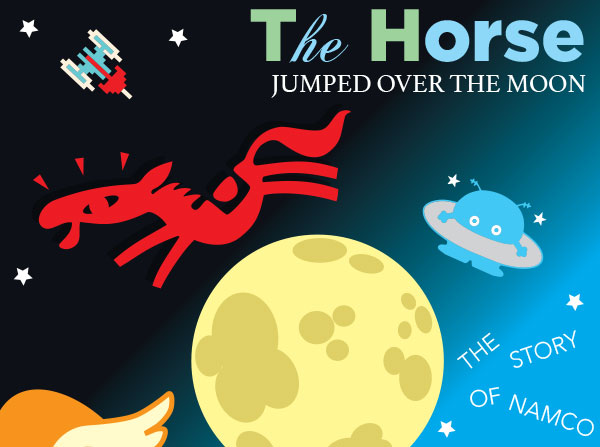
In the previous blog I talked about how Masaya Nakamura, the founder, and president of Namco was similar to Walt Disney on several fronts. Both started from modest means, and both built massive companies seemingly out of thin air. Mr. Nakamura saw opportunities where none existed, and knew the importance of play to society. Also like Walt he recruited creative minds to help fulfill his vision. His team of creators were pulled from every part of society, rather than the top university students as a traditional Japanese corporation would hire. Back then Namco had a Robot Project team, which was rare as they weren’t necessarily part of consumer goods, or industrial projects. The company had a number of robot showings at trade events including several entertainment robots designed by Shigeki Toyama, who had been called the “Leonardo DaVinci of Namco.” When you look back at everything he worked on you would see that it was a well earned reputation.
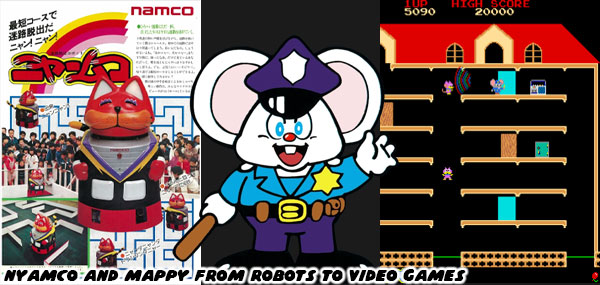
A few years before Expo ’85 Mr. Toyama was an industrial designer looking for work, he didn’t know anything about video games. A friend advised him to apply at Namco, he was put on the Robot Production Team's Business Division. He didn’t necessarily know anything about robots either, but as with their other teams the studio was willing to take chances on creative minds. Mr. Toyama learned on the job what the entertainment company was about. He helped design products, everything from arcade cabinets to character concept art, and he also cleaned up the art for the game development teams. He would turn the simple blocky shapes of a sprite into a complex rendering. It would be featured on the cabinet art, magazines, and official advertising.
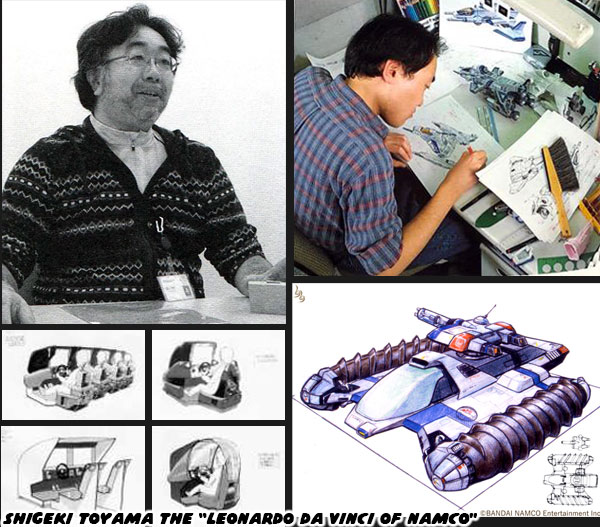
Mr. Toyama designed a robot mouse named Mappy in 1981, and it was going to be made into a video game. He was asked to create a model sheet for Mappy, and Nyamco the cat to help shape the direction of the 1983 arcade hit. A couple years later they were asked to have a showing at Expo '85. Mr. Toyama was expecting a Pavilion to be built for Namco. Since it was a science-based fair the company was expected to present their robotics. In Toyama’s own words
"The robotic maze contest “Micromouse” was just beginning then too, but no one had yet created a robot that could get through the maze quickly. We said to ourselves, “Let’s show them how it’s done!” We made a robot that could get through the maze in one minute."
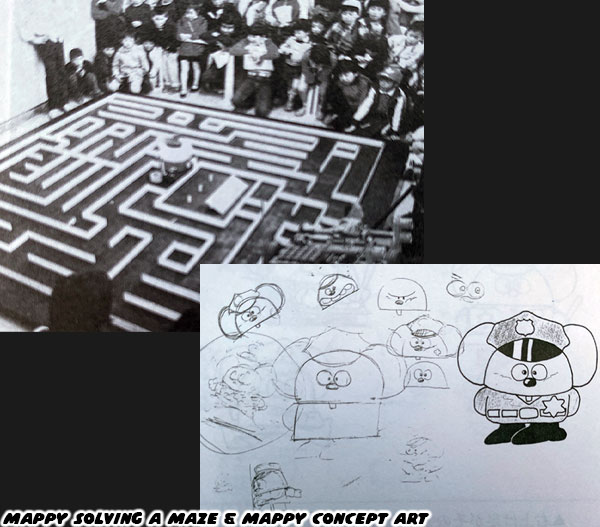
The other robot mice competing at the expo took several minutes to complete the mazes. The one from Namco easily destroyed them. It turned out that the best universities, and companies couldn't compete with the studio made up of creative thinkers. Not content to simply beat the other robots their updated Mappy had an actual body, and did a little dance too after completing the maze. To say that audiences fell in love with the character all over again would be an understatement. A home robotics kit version called Mappy Jr. would become available to consumers a few years later. It was far from the last advancement in entertainment robotics that Namco would create for that generation.
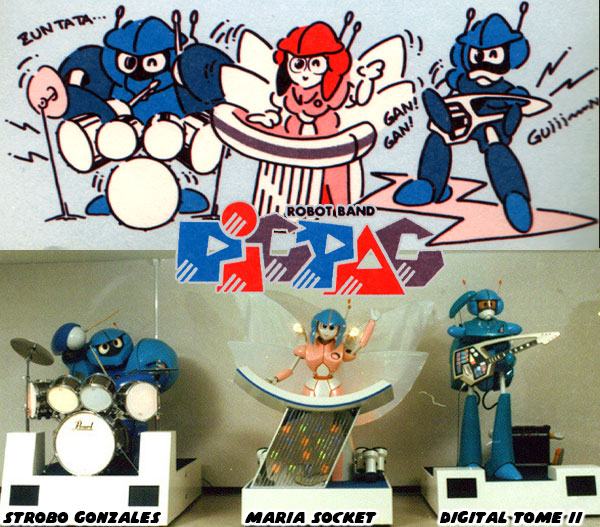
In addition to the highly popular Mappy Mr. Toyama designed the lesser known (at least in the USA) PicPac robot band in 1984. The Robot Band was inspired
in part by the animatronics featured in the Chuck E Cheese Pizza Parlors in the USA. In case you weren’t aware, the restaurant / arcade inspired the creation of Five Nights at Freddy’s. Namco figured they could create their own robotic band to entertain patrons of their arcades, and entertainment centers. The trio of robot-bug-musicians consisted of drummer Strobo Gonzales, singer/keyboard player Maria Socket (with expanding luminescent wings), and guitarist Digital Tome II. The composer behind the robot's music was Norio Nakagata whose New Wave sound
was reminiscent of Missing Persons. They performed a 30-minute show, which was shortened to smaller sets later on.
Portions of their show were recreated in the Namco Museum. There was even
a YouTube documentary about this band.
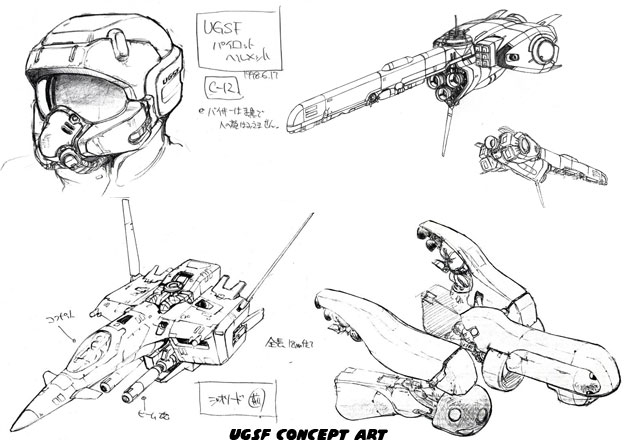
In addition to designing arcade cabinets, robots, cartoon characters for Namco Mr. Toyama had crafted most of the designs featured in the Namco space games. He mentioned in
the translated interview at SHMUPlations that the game Xevious had designs that were homages to the ships from Star Wars, UFO, and Aliens. Mr. Toyama was also heavily Influenced by the designs of Ron Cobb (an in-betweener on Walt Disney Studios Sleeping Beauty from 1956) his concept art were used in Jodorowsky’s Dune, Alien, Star Wars, Close Encounters of the Third Kind, The Last Starfighter, Robot Jox, the Abyss, and Back to the Future just to name a few.
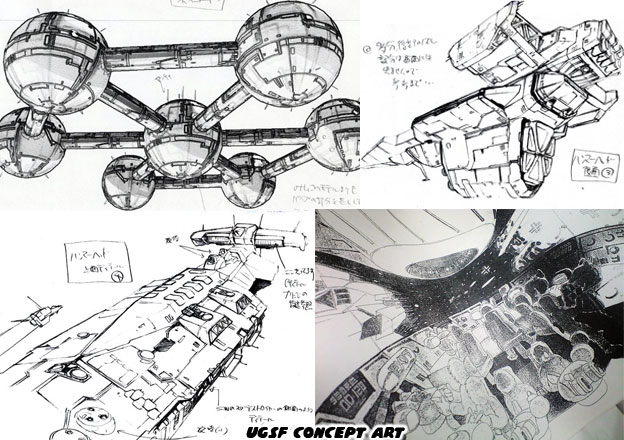
Mr. Toyama's art struck a balance between the stylized mecha designs from Japan, and the western industrial style of Mr. Cobb. It was a perfect blend in my book. In fact he was the reason why I personally ranked the sci-fi designs of the UGSF universe above Star Wars, or Star Trek. He was eager to take on every new challenge for the company. Unfortunately he would be met with disappointment. Mr. Toyama expected Namco to have a bigger showing during Expo ’85. Many insiders thought that the company was supposed to have a full Pavillion during the expo, but it never materialized. Instead the company had to rely on the little robotic mouse to get their names in the hearts of visitors. Mr. Toyama felt snubbed by the expo organizers, and wanted to take revenge for the company. The next expo would happen in Osaka five years later.
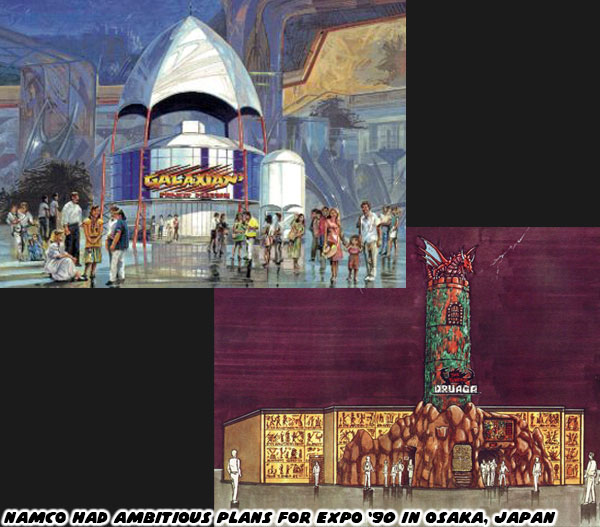
The studio started planning for something the world had never seen before. They wanted to create an experience that would amaze visitors. They had their eyes set on something that no other entertainment company had attempted. Having a robot mouse that upstaged their competition was nothing compared to what Namco accomplished in 1990. Their peers were absolutely blown out of the water. In fact the experience they created would change the trajectory of the company. We will look at this on the next blog. As always if you would like to sponsor me
please visit my Patreon page and consider donating each month, even as little as $1 would help make better blogs and even podcasts!
Wonder Eggs, and Egg Empire research collected from: Wonder Eggs Guide Map, Namco Graffiti magazine, the book “All About Namco II", NOURS magazine, The Namco Museum, Namco Wiki, Ge-Yume Area 51 Shigeki Toyama Collection, mcSister magazine, first person attraction details from Yoshiki. Event details from Hole in the Socks
















No comments:
Post a Comment